Featured Photo Above:
Addie Joos Benefit Game, July 24, 1911
(Color Restoration by Chris Whitehouse of They Played in Color website)
Baseball History Comes Alive Now Ranked As a Top Five Website by Feedspot Among All Baseball History Websites and Blogs!
(Check out Feedspot's list of the Top 35 Baseball History websites and blogs)

Guest Submissions from Our Readers Always Welcome! Click for details
Scroll Down to Read Today’s Essay
Subscribe to Baseball History Comes Alive for automatic updates (sign-up block found in right side-bar)
As a Free Bonus for subscribing, you’ll get instant access to my two Special Reports: Memorable World Series Moments and Gary’s Handy Dandy World Series Reference Guide!
1910 World Series Photo Gallery
Click on any image below to see photos in full size and to start Photo Gallery:
Let’s Revisit the 1910 World Series: Cubs vs. A’s!
Two Early 20th Century Dynasties Square-Off
The 1910 Fall Classic featured the Philadelphia Athletics and the Chicago Cubs, with the Athletics winning in five games. The first decade of the 20th century ended with these two powerhouses going head-to-head for the World Series championship. Connie Mack’s A’s had chalked up a 102-48 record (.680) in winning the American League pennant by 14 1/2 games over the New York Highlanders. The Cubs, managed by the “Peerless Leader,” Frank Chance, had a similar record, 104-50 (.675), 13 games ahead of New York’s National League team, the Giants.
The Cubs, often considered the new century’s first dynasty, were coming into the World Series having won four pennants and two World Series championships in the last five years. The A’s, on the other hand, were just beginning their run as an early 1910s dynasty with four pennants in five years between 1910 and 1914.
The photo above is one of my favorite Dead Ball Era photos, showing Cubs and A’s players mingling before the start of Game One. See if you can identify any of the players before looking at the IDs below. Hint: There’s three Hall-of-Famers in the pic.
Many Future Hall-of-Famers on the Field
The series featured a total of nine Hall-of-Famer: Connie Mack, Frank “Home Run” Baker, Chief Bender, Eddie Plank, and Eddie Collins for the A’s; and Mordecai “Three-Finger” Brown, Frank Chance, Johnny Evers, and Joe Tinker for the Cubs. In addition, two Hall-of-Famer umpires were on the field: Tom Connolly, and Hank O’Day.
And how about these infields! Two-thirds of the famous “Tinker-to-Evers-to-Chance” trio for the Cubs (Evers was injured and didn’t play); and three-fourths of the famous “$100,000 Infield” (Eddie Collins, Jack Barry, and Frank “Home Run” Baker minus Stuffy McInnes) for the A’s.
Both Teams Solid
The A’s line-up included three .300 hitters: Eddie Collins, Rube Oldring and Danny Murphy, plus and a 31-game winner in Jack Coombs; while Solly Hofman and Frank “Wild Fire” Schulte topped the .300 mark for the Cubs. Their 2.51 ERA led the National League. The A’s staff was even better, with an American League-leading 1.79 mark. Both teams suffered injures and would not be at full strength. The Cubs lost second baseman Johnny Evers to a broken ankle; and Philadelphia was missing Oldring with a broken leg. With pitcher Eddie Plank also out for the series with a sore arm, Connie Mack had to rely completely on his other aces, Jack Coombs and Chief Bender.
A Quick Recap of the Five Games
In Game One, Bender went against the Cubs’ Orval Overall. The A’s got three hits and two RBIs from Frank Baker, and scored a 4-1 victory with Bender tossing a three-hitter. Game Two saw Coombs pitch a solid, but unspectacular 9-3 victory. The A’s came out swinging in Game Three and drove Ed Reulbach off the mound in the second inning en route to a 12-5 romp, as Coombs won again, pitching with only one day’s rest. On the brink of elimination. the Cubs put their faith in rookie King Cole, coming off a 20-4 season, and managed to eke out a 4-3 win in 10 innings.
The Cubs went with their ace Mordecai Brown against the undefeated Coombs for Game Five. Both pitchers rose to the occasion and went neck and neck for seven innings. The A’s pulled ahead by a run before adding five more in the eighth on the way to a 7-2, Series-winning victory.
Coombs and Bender Only Pitchers Used in the Series!
Not only had the A’s defeated one of baseball’s earliest dynasties, but they also did it with just two starting pitchers, Bender and three-time winner Coombs. The victorious A’s went on to will pennants in 1911, 1913, and 1914, with World Series victories in 1911 and 1913, before being upset by the Miracle Braves in 1914.
Player IDs from the Featured Photo:
L-R: Frank Chance (HOF), Eddie Plank (HOF), Mordacai “Three-Finger” Brown (HOF), Harry Davis, Jimmy Sheckerd, and Jimmy Archer.
Gary Livacari
Photo Credits: “The Book of Baseball,” 1911 by William Patten; “Greats of the Game,” by Ray Robinson; Pulbic domain.
Information; Excerpts edited from Baseball Almanac.com; the 1910 World Series Wikipedia page; and Baseball-Reference.com
Subscribe to our website, “Baseball History Comes Alive!” with over 1200 fully categorized baseball essays and photo galleries, now surpassing the 700K hits mark at 740K hits: www.baseballhistorycomesalive.com
Take a guess at this week’s mystery player!
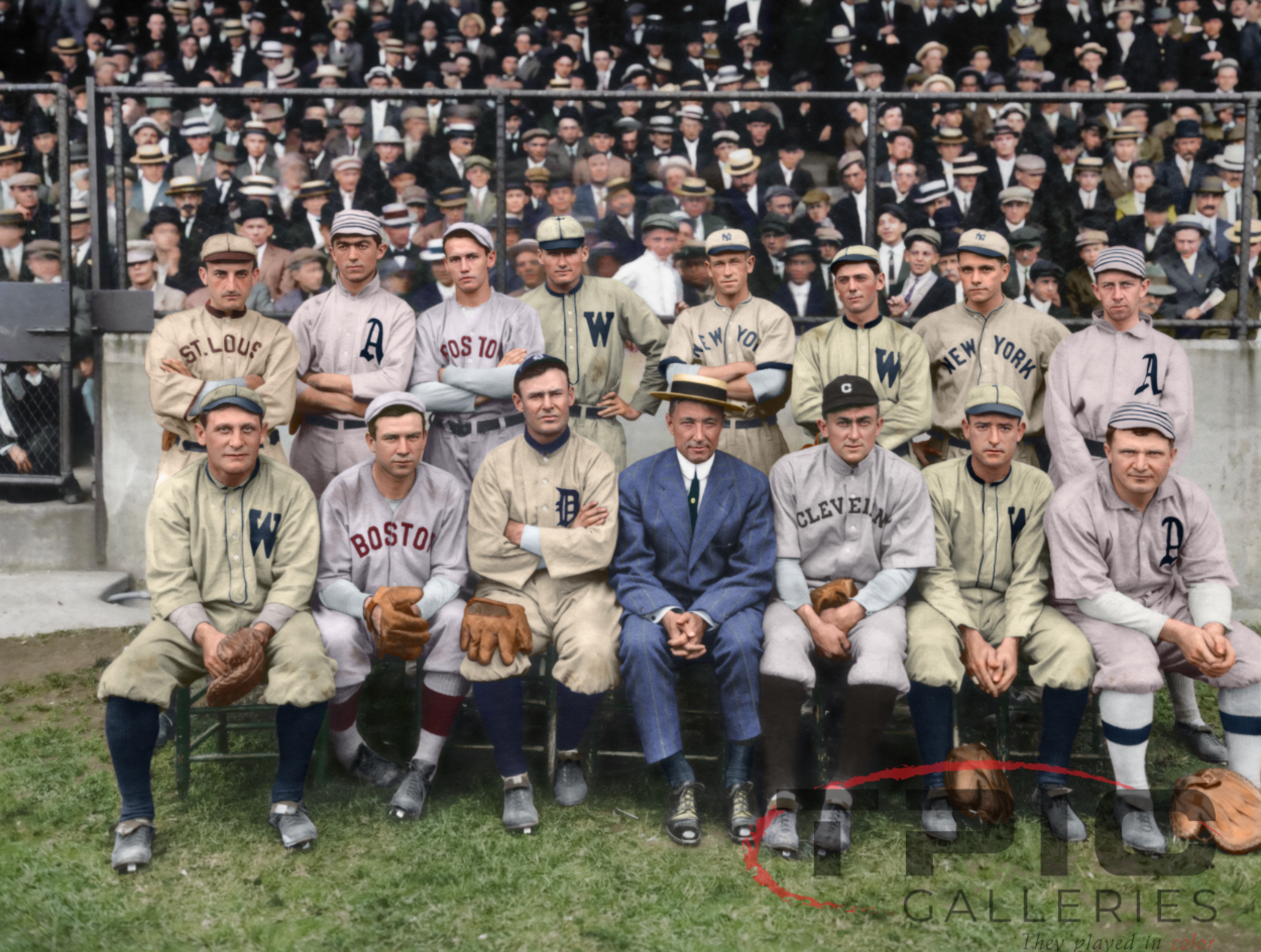
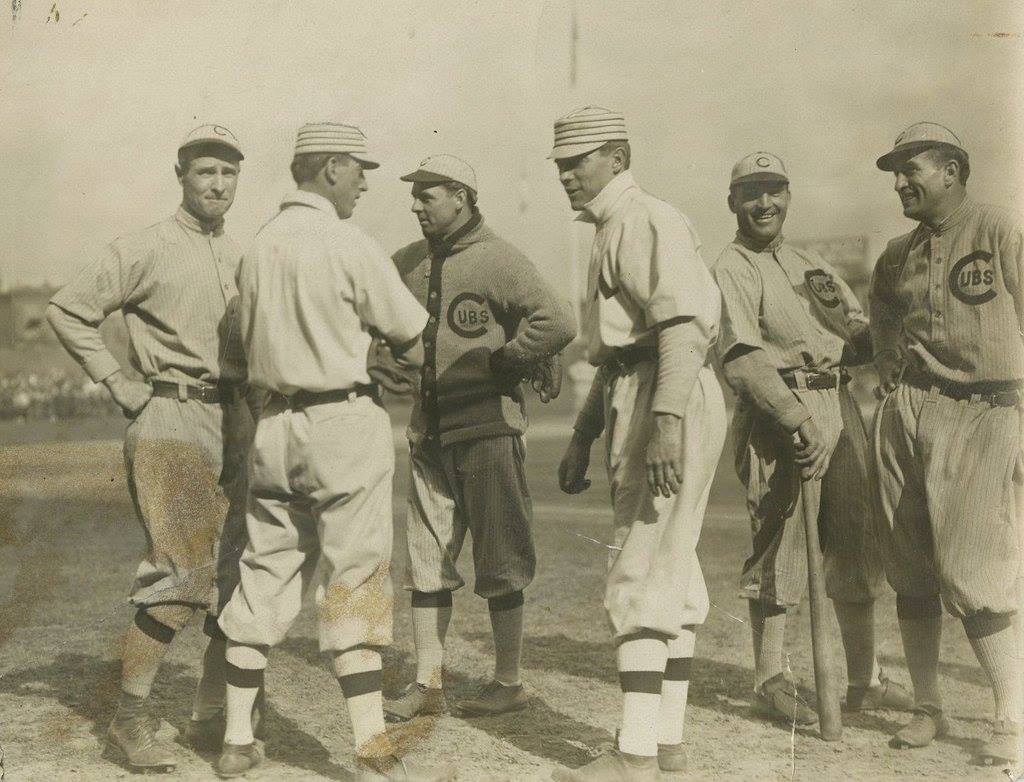
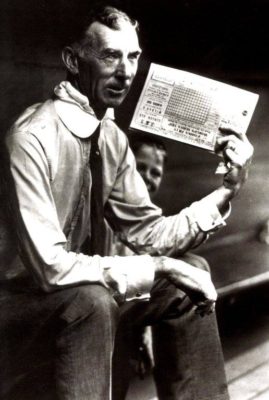
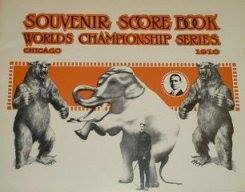
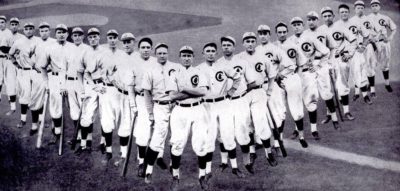
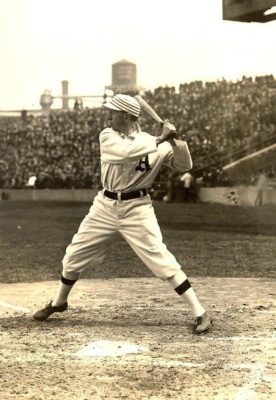
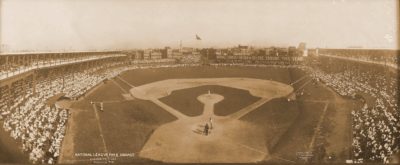
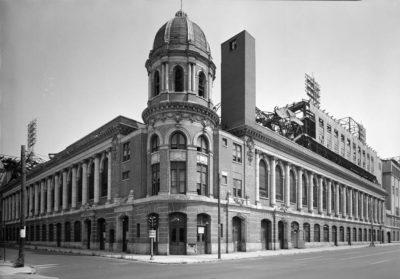
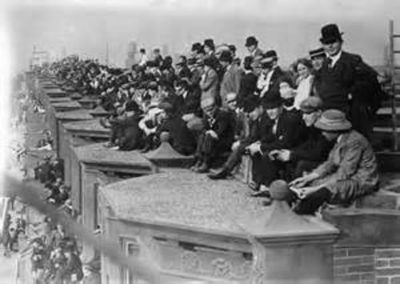
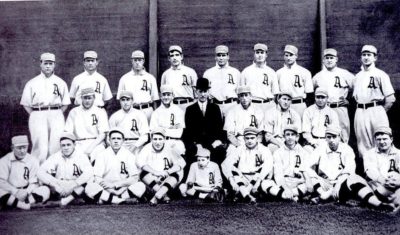
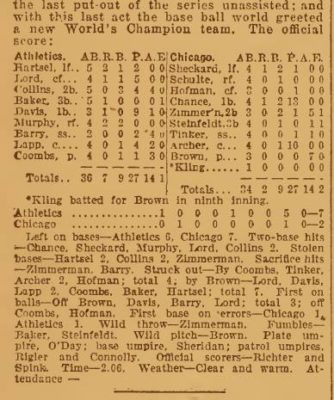
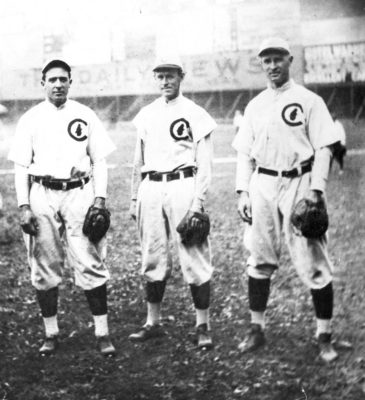
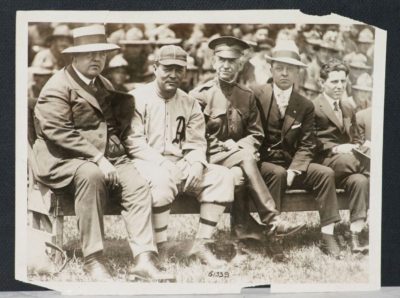
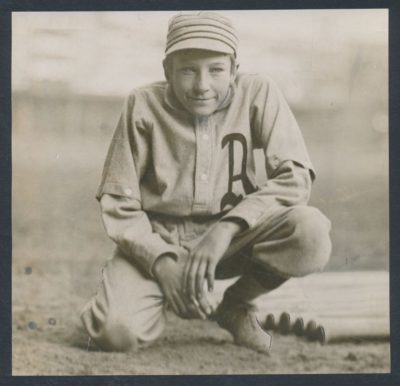
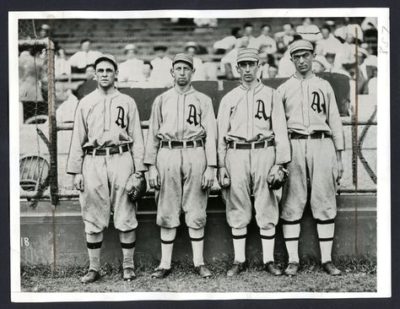
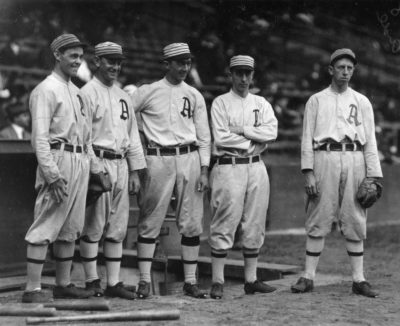
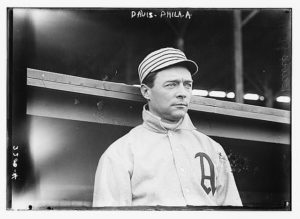
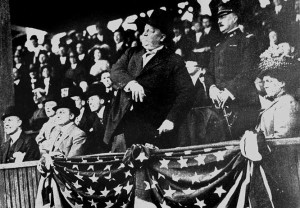
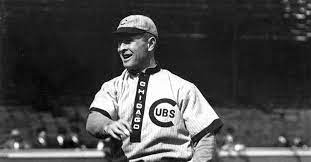
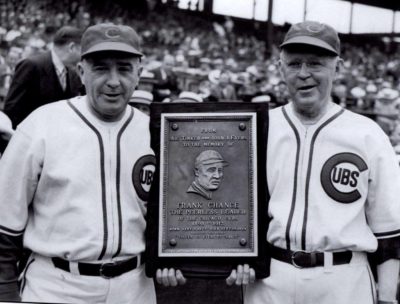
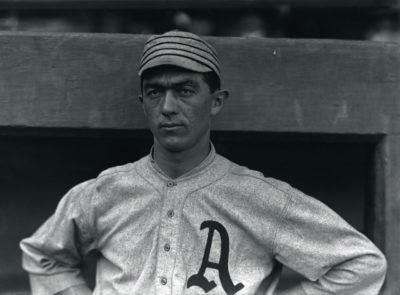
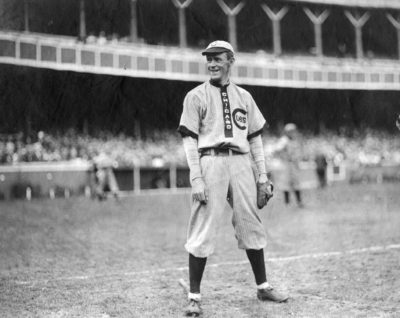

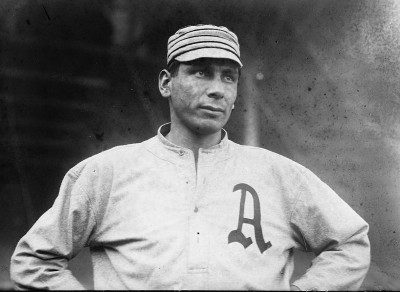
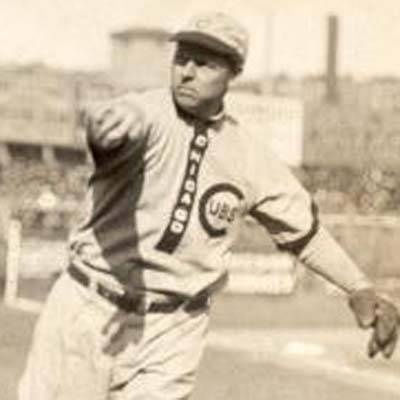
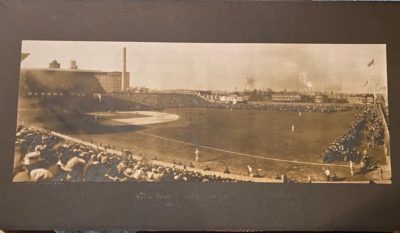
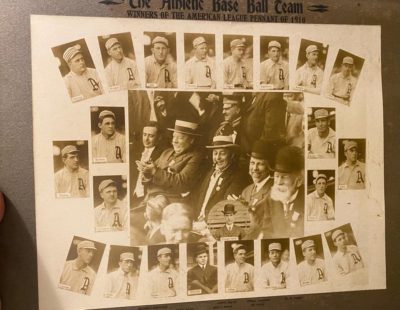

I love it, Gary! You definitely are “on your game.”
Thank you,
Michael
P.S. Pray the rosary — Catholic, Methodist, Presbyterian or Whig — it doesn’t matter. December 5 is just around the corner.
Thanks Michael!
Hi Gary
We often think of players who have inspired us by overcoming disabilities to have great careers. In this series we find the unique battery of Mordecai Brown and Jimmy Archer who did not excel in spite sever injuries. Rather they excelled because of them.
I take the liberty of posting from SABR:
Jimmy Archer
This article was written by Bill Bishop
Jimmy Archer was the regular catcher for the Chicago Cubs from 1911 through 1916, earning a spot on Baseball Magazine‘s “All-America Team” each year from 1912 to 1914. Renowned for popularizing the snap throw from a squatting position, Archer enjoyed a reputation for having the best throwing arm of any catcher in the Deadball Era. “The best throwing catcher of them all was Jimmy Archer of the Cubs,” said Chief Meyers of the New York Giants, the only receiver aside from Archer to catch over 100 games each season from 1911 to 1913. “He didn’t have an arm. He had a rifle. And perfect accuracy.” Al Bridwell, the ex-Giant shortstop who played with Archer on the 1913 Cubs, agreed. “Best arm of any catcher I ever saw,” said the man who received many of Archer’s snap throws. “He’d zip it down there to second like a flash. Perfect accuracy, and under a six-foot bar all the way down.”
James Peter (Patrick?) Archer was born in Dublin, Ireland, on May 13, 1883. His family moved to Montreal when he was an infant, and by the time he was three the Archers had settled in Toronto. Jimmy played baseball at St. Michael’s College and in the Toronto City League. During the winter of 1902, the 19-year-old Archer was working as a barrel maker at a cooperage in Toronto when he fell into a vat of boiling oak sap, scalding his right arm and leg so badly that he was hospitalized for three months. Jimmy was in so much pain during his hospitalization that he begged for his arm to be amputated. As a result of the accident, the tendon in his right arm shrunk and made his right arm shorter than his left. Jimmy was left with a unique strength; he always claimed that the accident was what gave him his unique ability to throw quickly and accurately from a squatting position.
———————————————–
Mordecai Brown
This article was written by Cindy Thomson
Mordecai’s most familiar nickname was Three Finger, although he actually had four and a half fingers on his pitching hand. Because of childhood curiosity, Mordecai lost most of his right index finger in a piece of farming equipment. Not long after, he fell while chasing a rabbit and broke his other fingers. The result was a bent middle finger, a paralyzed little finger, and a stump where the index finger used to be.
Brown’s deformed hand enabled him to throw a bewildering pitch with lots of movement. Although the jumping ball was a problem when Brown was an infielder, it was an advantage when he pitched. Despite having what had seemed like a terrible handicap, Brown’s pitching performance that day was daunting. The Brazil manager was impressed, and the team offered Brown more money to play for them, but he didn’t jump until he’d completed the season.
Ty Cobb once described Brown’s lively pitch as the most devastating he’d ever tried to hit. His words are forever enshrined on a marker erected to Mordecai Brown in Nyesville, Indiana. It is high praise from a man who had remarkable success at the plate during the time when the ball had little juice. In his career, Brown won five World Series games for the Cubs and lost four. Cobb hit .273 off Brown during World Series play, but Brown won every World Series game he pitched against Cobb and the Tigers.
Thanks a lot Ed. I share your sentiment. And I never knew that about Jimmy Archer, so thanks for the great info.
Hooks Wiltse
I’m a big fan of World Series history and you did a great job bringing back to life the 1910 Fall Classic. Two great teams battled, with the A’s on their way up and the Cubs beginning decades of futility. Well done.
Thanks a lot Steve. You might check out the World Series category here on Baseball History Comes Alive. . I just looked and right now I have 174 entries. Over the years, I’ve written about many of the the great World Series. Thanks again! -Gary